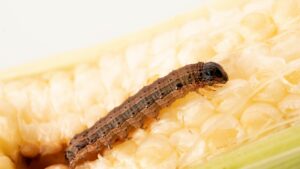Fall Armyworms Have Arrived
go.ncsu.edu/readext?1026494
en Español / em Português
El inglés es el idioma de control de esta página. En la medida en que haya algún conflicto entre la traducción al inglés y la traducción, el inglés prevalece.
Al hacer clic en el enlace de traducción se activa un servicio de traducción gratuito para convertir la página al español. Al igual que con cualquier traducción por Internet, la conversión no es sensible al contexto y puede que no traduzca el texto en su significado original. NC State Extension no garantiza la exactitud del texto traducido. Por favor, tenga en cuenta que algunas aplicaciones y/o servicios pueden no funcionar como se espera cuando se traducen.
Português
Inglês é o idioma de controle desta página. Na medida que haja algum conflito entre o texto original em Inglês e a tradução, o Inglês prevalece.
Ao clicar no link de tradução, um serviço gratuito de tradução será ativado para converter a página para o Português. Como em qualquer tradução pela internet, a conversão não é sensivel ao contexto e pode não ocorrer a tradução para o significado orginal. O serviço de Extensão da Carolina do Norte (NC State Extension) não garante a exatidão do texto traduzido. Por favor, observe que algumas funções ou serviços podem não funcionar como esperado após a tradução.
English
English is the controlling language of this page. To the extent there is any conflict between the English text and the translation, English controls.
Clicking on the translation link activates a free translation service to convert the page to Spanish. As with any Internet translation, the conversion is not context-sensitive and may not translate the text to its original meaning. NC State Extension does not guarantee the accuracy of the translated text. Please note that some applications and/or services may not function as expected when translated.
Collapse ▲We are currently experiencing an armyworm outbreak in Currituck, with these voracious pests rapidly damaging lawns, gardens, and crops across the area. Armyworms are typically 1 to 1.5 inches long when fully grown and have a distinctive, elongated, caterpillar shape. They exhibit a range of colors, from light green to dark brown or nearly black, often with subtle stripes running lengthwise along their bodies. Their appearance can be marked by alternating dark and light bands, which can vary in intensity and are sometimes accompanied by small, pale spots.


Damage
Armyworms feed aggressively on grass and vegetation, causing significant defoliation and potential long-term harm to your plants. We encourage you to inspect your property frequently for signs of these destructive larvae, such as chewed leaves and droppings. If you spot any indications of an infestation, there are various control methods to mitigate the damage outlined in the link below. Staying alert and proactive will help protect your landscape from these harmful pests.
Additional Information
For detailed information on managing armyworm outbreaks, please visit this resource. If you have additional questions call Chris Blaha at the N.C. Cooperative Extension, Currituck County Center at 252-232-2261 or email at ctblaha@ncsu.edu.




